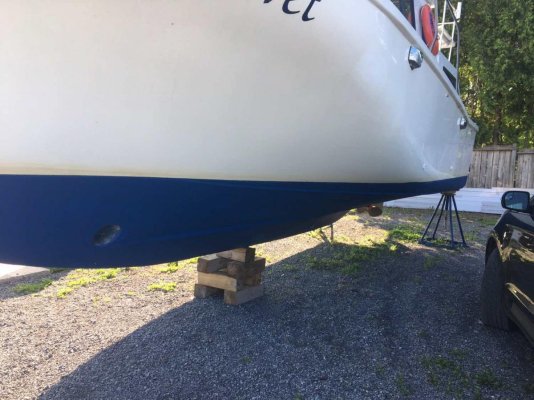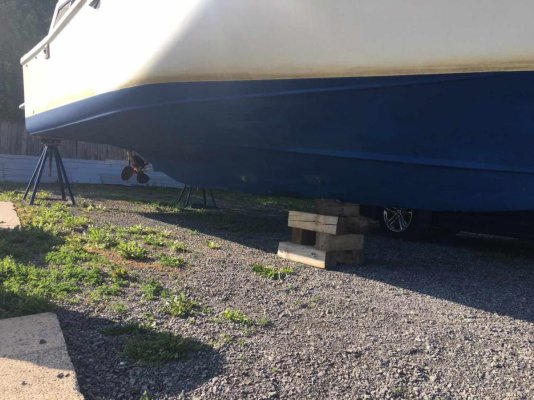Nomad Willy
Guru
Sorry this happened to you Lou,
Almost happened to me a few years ago.
Was putting Willy on the tidal grid in Alaska. Was very careful to tie up so three beams would be in the prefect position.
When the tide went out I was balanced on one beam. The beams ahead and behind had 1 1/2” of air between the keel and the beam. So all eight tons of boat was supported on one spot amidships. The beam was a steel I beam about 10” wide but no support under the boat except in the center at that one spot. In case you’re wondering I did put wedges tween the keel and beams at either end.
All went well though and never have found a trace of damage. Just got dumb lucky as I assumed the boat keel was straight. Ya Ya I know ... “makes a fool ... “ but I never thought of the keel being curved.
Almost happened to me a few years ago.
Was putting Willy on the tidal grid in Alaska. Was very careful to tie up so three beams would be in the prefect position.
When the tide went out I was balanced on one beam. The beams ahead and behind had 1 1/2” of air between the keel and the beam. So all eight tons of boat was supported on one spot amidships. The beam was a steel I beam about 10” wide but no support under the boat except in the center at that one spot. In case you’re wondering I did put wedges tween the keel and beams at either end.
All went well though and never have found a trace of damage. Just got dumb lucky as I assumed the boat keel was straight. Ya Ya I know ... “makes a fool ... “ but I never thought of the keel being curved.
Last edited:


